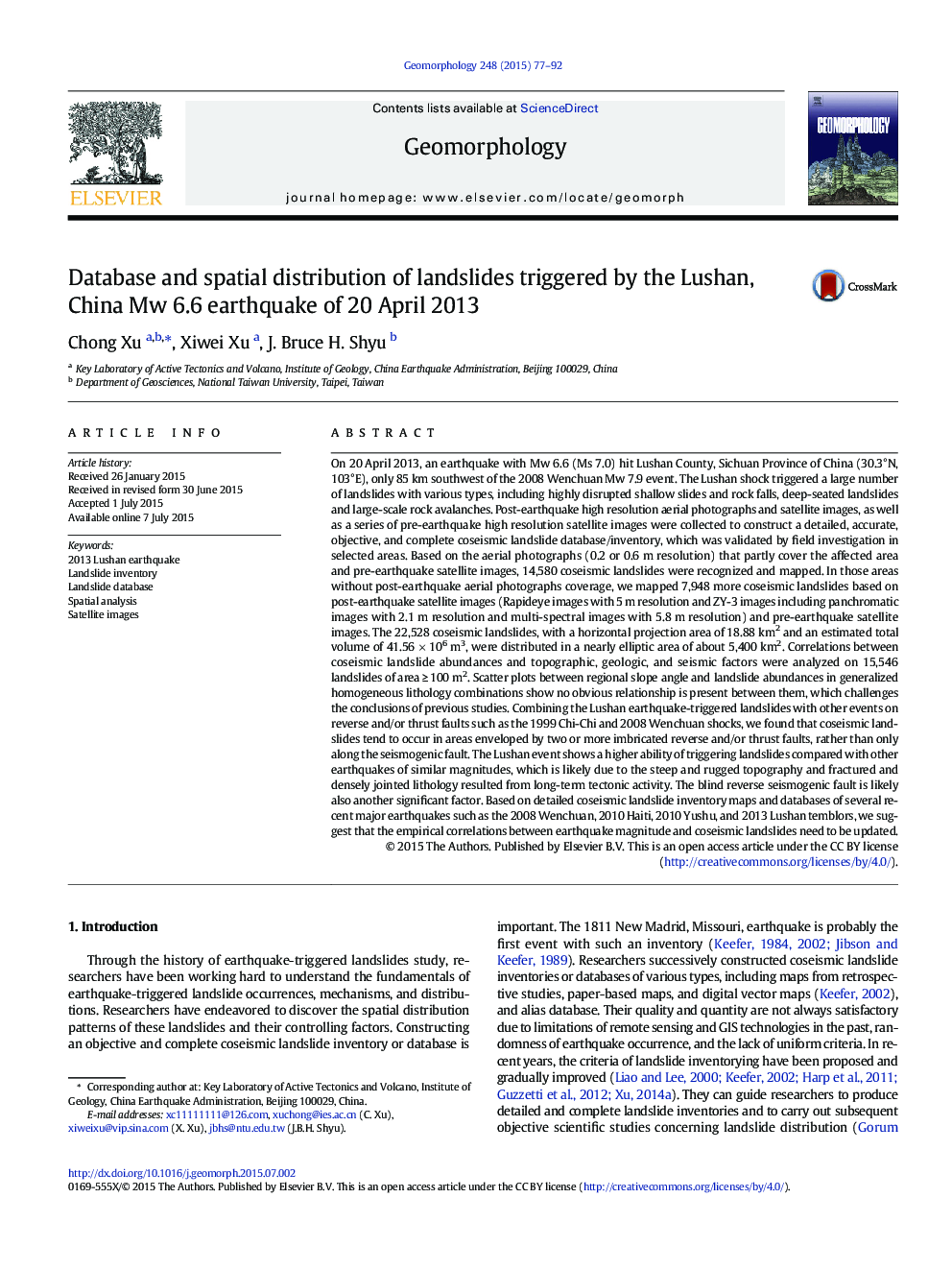| کد مقاله | کد نشریه | سال انتشار | مقاله انگلیسی | نسخه تمام متن |
|---|---|---|---|---|
| 6432032 | 1635401 | 2015 | 16 صفحه PDF | دانلود رایگان |

- We produced the 1st detailed 22,528 landslide database related to the Lushan event;
- The 15,546 landslides with area â¥Â 100 m2 are correlated with 12 impact parameters;
- We challenge the relation between topography and landslides in homogeneous stratums;
- Landslides triggered by imbricated-fault quakes aren't only along seismogenic fault;
- The blind-reverse-fault Lushan event has powerful ability for triggering landslides.
On 20 April 2013, an earthquake with Mw 6.6 (Ms 7.0) hit Lushan County, Sichuan Province of China (30.3°N, 103°E), only 85 km southwest of the 2008 Wenchuan Mw 7.9 event. The Lushan shock triggered a large number of landslides with various types, including highly disrupted shallow slides and rock falls, deep-seated landslides and large-scale rock avalanches. Post-earthquake high resolution aerial photographs and satellite images, as well as a series of pre-earthquake high resolution satellite images were collected to construct a detailed, accurate, objective, and complete coseismic landslide database/inventory, which was validated by field investigation in selected areas. Based on the aerial photographs (0.2 or 0.6 m resolution) that partly cover the affected area and pre-earthquake satellite images, 14,580 coseismic landslides were recognized and mapped. In those areas without post-earthquake aerial photographs coverage, we mapped 7,948 more coseismic landslides based on post-earthquake satellite images (Rapideye images with 5 m resolution and ZY-3 images including panchromatic images with 2.1 m resolution and multi-spectral images with 5.8 m resolution) and pre-earthquake satellite images. The 22,528 coseismic landslides, with a horizontal projection area of 18.88 km2 and an estimated total volume of 41.56 Ã 106 m3, were distributed in a nearly elliptic area of about 5,400 km2. Correlations between coseismic landslide abundances and topographic, geologic, and seismic factors were analyzed on 15,546 landslides of area â¥Â 100 m2. Scatter plots between regional slope angle and landslide abundances in generalized homogeneous lithology combinations show no obvious relationship is present between them, which challenges the conclusions of previous studies. Combining the Lushan earthquake-triggered landslides with other events on reverse and/or thrust faults such as the 1999 Chi-Chi and 2008 Wenchuan shocks, we found that coseismic landslides tend to occur in areas enveloped by two or more imbricated reverse and/or thrust faults, rather than only along the seismogenic fault. The Lushan event shows a higher ability of triggering landslides compared with other earthquakes of similar magnitudes, which is likely due to the steep and rugged topography and fractured and densely jointed lithology resulted from long-term tectonic activity. The blind reverse seismogenic fault is likely also another significant factor. Based on detailed coseismic landslide inventory maps and databases of several recent major earthquakes such as the 2008 Wenchuan, 2010 Haiti, 2010 Yushu, and 2013 Lushan temblors, we suggest that the empirical correlations between earthquake magnitude and coseismic landslides need to be updated.
417
Journal: Geomorphology - Volume 248, 1 November 2015, Pages 77-92